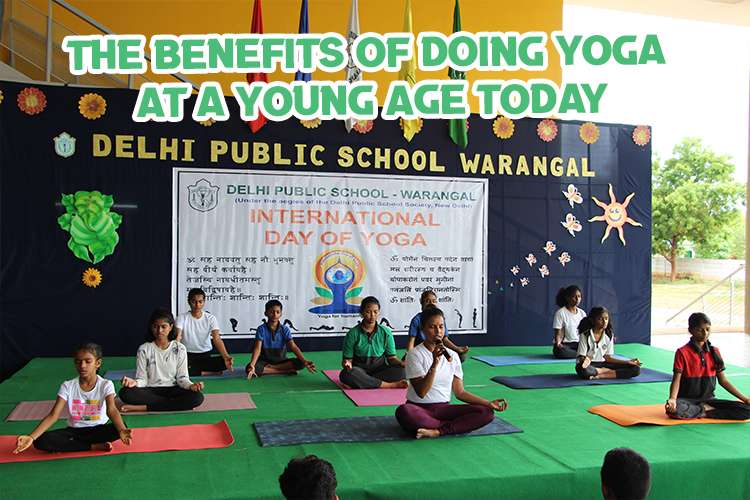Yoga is accessible to anyone, regardless of age, with a physical body, the ability to breathe, and the desire to be present. Our focus in this blog is on children and teenagers. Encouraging young people to participate in yoga can be a challenging task. Once they have been introduced to the practice, the impact can be transformative. The benefits of yoga are significant for children. It has a calming effect on the mind, helps one focus better, and most importantly gives everyone a sense of balance, and peace.
Yoga has been identified as a valuable tool for promoting mental health and well-being. Amidst the complexities of navigating social media platforms such as Snapchat, Instagram, Lemon8, and others, young minds require moments of rest and rejuvenation. Yoga provides this in the form of concentration since one of the core requirements of a yoga practice is to pay attention to the body and bring physical awareness to each movement.
Land of Yoga: Relevance to school children
Yoga for youngsters usually involves simpler poses unlike what is practiced for adults. Typically, the aim is to focus on breathing and balance instead. Now let’s bust the myths of complexity wide open. Yoga –being a practice that originated in India –offers many psychological benefits, such as improved focus, improvement in memory, self-esteem, ability to improve one’s academic performance, but also affect classroom behavior positively. There is encouraging research that it can reduce anxiety and stress in children. Since kids are also in the process of developing their physical body, it also works to help them gain strength and flexibility, while minimising their tendency to be anxious, and distracted. By using yoga in a playful manner, we can help children –regardless of age–become focused on what’s in front of them.
Yoga: for concentration, focus and compassion
Yoga is like an aid that helps you in doing your math homework, quietly waiting in the wings to keep distractions at bay. It helps your mind stay steady from the land of incessant notifications, Facebook updates and selfies to a zen state of unprecedented focus and mental clarity.
Yoga boosts not just their concentration abilities but also empowers the practitioner at a mental level. Use it wisely and with a little bit of flexibility. By practicing yoga, the goal is not to be perfect –but to simply enjoy the practice of yoga. When a yoga instructor gives a child certain directions for a new pose, they can follow them but to get it right a child must persevere and this is where yoga works to instill a sense of patience, and consistency needed to work toward their goals. When they achieve this mastery, they feel a sense of confidence and accomplishment that directly affects their sense of self-esteem.
A shared activity as parents:
Given the regimental schedule school kids need to follow —right from waking up on time, to exam schedules, to having every minute being planned for them, simply engaging them in a yoga route with you daily is a nice way to bond with them, without the stress of getting something right.This will not only alleviate your own stress as a parent, or guardian but teach both parent and child to be in the moment, and get some physical workout at the same time. By following this sense of discipline in focusing on your breath, you’re also providing a good example of taking care of yourself to your child. What makes yoga universal is that you can adjust each pose for every age group, and enjoy it together.
By using yoga without any digital interruptions, it’s also a way to spend some quality time together as a family. There are many recommended poses that parents, grandparents and children can practice together. Yoga also offers moments of connection, and helps you impart valuable learnings to your children.
For example, in taking inspiration from the “Tree Pose” –one thing that always works is that a tree stands tall because it is grounded, and has a strong foundation. It can be used as a natural time and moment to impart valuable life philosophies to your child in the form of stories, and exercises while they understand their own bodies. In persisting with some poses, children also learn the need to keep trying and trying again. Teaching them to be patient with themselves, and their bodies is perhaps one of the most crucial lessons you can instill in them.
Why do schools teach yoga to students today?
Schools are introducing yoga to students, and there are good reasons for it. Yoga is a practice that involves gentle exercises and breathing techniques that can help students in many ways.
- Controlling Emotions: For students to do well in school and life, they need to be able to manage their emotions. Yoga can help with that. Research shows that students who do yoga regularly become better at handling their feelings and staying calm.
- Doing Better in School: Everyone wants students to do well in their studies. Yoga can actually improve their ability to focus and remember things. It can also reduce the stress that comes with exams and assignments, helping students perform better.
- Less Stress and Anxiety: School can sometimes be stressful. Yoga can help students feel less anxious and tense. Studies have found that students who practice yoga experience less stress and feel better overall.
- Handling Tough Situations: Life can be tough sometimes, and students need ways to cope. Yoga helps students deal with challenges and difficult situations by making them more resilient. Resilience means being able to bounce back and stay strong even when things are tough.
- Reducing Bad Behavior: Yoga might even help reduce bullying and other negative behaviors. Some studies show that students who do yoga are less likely to bully others or behave badly. This is good for creating a positive and safe school environment.
- Physical Fitness: Physical activity is important for staying healthy. Yoga is a kind of exercise that’s gentle and calming. It helps students become physically fit and flexible without being competitive.
- Happier Teachers and Classrooms: It’s not just the students who benefit from yoga; teachers do too. When teachers practice yoga, they feel happier and more in control. This positivity can spread to the classroom, creating a better learning environment for everyone.
These very advantages make it a necessary tool that schools now use on a daily basis. Given the frayed attention spans, schools today teach yoga to students for a crucial reason. Unlike the simpler times, where school worries were minor, today’s students face complex challenges – from academics to technology and social pressures. Yoga aids immensely here. Starting lessons with moments of silence and deep breathing brings stillness, readies them to learn, and helps absorb knowledge. This practice ingrains calmness early on, easing exam stress and fostering emotional strength. Daily yoga routines enhance attention spans, making it an essential tool in modern education.
Yoga is for everyone, including children and teenagers. Getting kids involved in yoga might be tough initially, but its benefits are transformative. It calms the mind, improves focus, and brings balance and peace. Especially in today’s digital world, where young minds need rest, yoga offers concentration and awareness through movement. It’s great for mental health.
For youngsters, yoga is simpler than adult practices, focusing on breathing and balance. It improves focus, memory, self-esteem, and even classroom behavior. Research shows it reduces anxiety and stress in kids. It makes them physically stronger and more flexible while reducing anxiety. Practicing yoga together is a bonding opportunity for parents and kids, teaching patience and self-care. Schools teach yoga because it helps manage emotions, improves focus, reduces stress and bad behavior, and keeps everyone physically fit.




